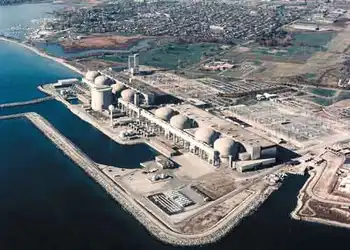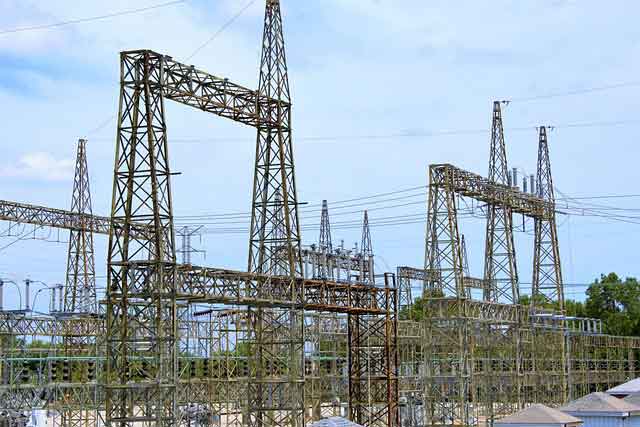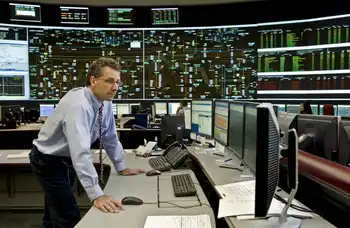Westar's new president aims to keep the lights on, the public happy
By Knight Ridder Tribune
NFPA 70e Training
Our customized live online or in‑person group training can be delivered to your staff at your location.

- Live Online
- 6 hours Instructor-led
- Group Training Available
That's the price Westar paid for a chance to turn the page from seven years of financial problems and scandal while proving its mettle as a responsive electric utility, said Bill Moore, Westar's executive vice president. Moore, who will replace the retiring Jim Haines as president on June 30, remains focused on keeping the lights turned on through a plan he will implement to grow electric generation and improve transmission lines. A new coal-fired generator, an Emporia plant with 600 megawatts of peak usage capacity and new transmission lines connecting Wichita, Hutchinson and Salina are on the short-term drawing board.
Other projects include $750 million in pollution control improvements at existing Westar generating plants and determining whether nuclear energy can play a larger role in the company's electric generation capacity. But none of those discussions would have been possible, Moore said, without the public trust - lost during the David Wittig years and at least partially regained by the five-day turnaround to get the lights back on. Mission accomplished, said one of the utility's professional antagonists. "The state of Westar is very good," Kansas Corporation Commission chairman Brian Moline said.
"When Wittig left, the stock was at an all-time low; its credit rating was abysmal; their reputation with us was terrible. "Today, though, it's a strong company. The combination of Jim Haines, the people he brought in like Bill Moore and the 'basic utility' philosophy he imbued has turned that company around." Edward Jones stock analyst Brian Youngberg agreed. "We have a 'buy' on it," he said. "Kansas needs investment in its infrastructure - generation, distribution, transmission - and that means good earnings and dividend growth potential." Out of disaster Moore doesn't want to admit that Westar looks back fondly on that record coating of ice.
But... "We could have really failed with the ice storm, and the result would have sent this company in the wrong direction," Moore said. "If we're not able to deliver reliable service, it (Westar's future) becomes much more of a challenge." Instead, 3,500 workers took five days to get most customers back on line. That response under pressure, and Haines' aggressive move in 2003 to sell off Westar's diversified assets and restore its credibility, were crucial to today's growth plans, Moore said. "We all knew that we weren't going to get a second chance," Haines said. "We had to get it right from the start, get it right the first time.
Not just right in concept, but execute it well." Westar board chairman Charlie Chandler, president of Intrust Bank, took the storm's impact a step further. "It was a chance to show the state that Westar was back, still effective and on its game," he said. "Plus, we were able to develop the confidence in some very talented people in our organization that we have the capability and capacity to take on all the challenges before us." Westar's future More electric generating capacity, a more sophisticated transmission system for Kansas and the long-term future of nuclear energy are some of the challenges before Moore.
It's the same challenge before every American utility, Moline said. "We're in a whole new uncharted territory with transmission, on a regional level with a lot of structural changes," he said. Opposition from environmentalists to a new coal plant, and the focus on alternate energy sources like wind, complicates the debate over new generation capacity, Moline said. "In the not-so-short-term, we're going to need to build new base generation," he said. "In this state, it's either coal or nuclear. Given the public's attitude toward both, that's a very difficult problem for Westar and other electric utilities around - to make and then politically sell whatever their choice is." Moore said nuclear energy will have to evolve before Westar can grow its Wolf Creek plant.
"Right now, we can't be leading edge on a new round of nuclear plants," he said. "We're too small. "We could participate with someone in the future. We have a unit at Wolf Creek that was built to house two units. It's a great site, but there hasn't been a nuclear plant built (recently) in the United States." In the 22 years since Wolf Creek opened "a lot of nuclear technology, intelligence and know-how has moved overseas," Moore said. "No design is currently approved." It's a lot of challenges, but they will be met, Moore said. "It's been said a lot, but we're back to being a basic utility," he said.
"We know what we're doing and we're capable of meeting the challenges in the future."











